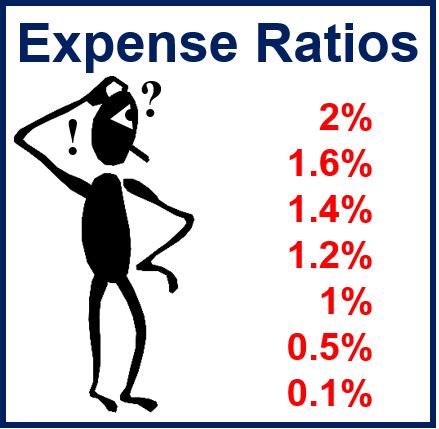What is the Expense Ratio?
The expense ratio represents the costs of operating a mutual fund. It is the annual fee that all funds or ETFs (exchange traded fund) charge their shareholders. It does not include brokerage commissions or sales loads.
The expense ratio is calculated by dividing a fund’s operating expenses by the average dollar value of its assets under management.
It is also known as “management expense ratio” (MER).
The cost of owning a fund can be expressed using expense ratio (which is different from the costs of buying a fund).
 Expense ratios can range from 2% to 0.1%.
Expense ratios can range from 2% to 0.1%.
It is the percentage of a fund’s assets used for management, advertising, administrative, 12b-1 distribution fees (annual marketing or distribution fees on a mutual fund), and other expenses.
Expense ratios are used when determining which fund to choose, as they can have an important effect on returns.
Factors that influence the expense ratio include:
- the size of the fund,
- sales charges, and
- the management style of the fund.
The average annual expense ratio for an American stock fund is approximately 1%. However, some passively managed funds (such as index funds) have much lower ratios. Generally, the smaller the fund the higher the ratio.
An expense ratio of 1% per annum means that every year 1% of the fund’s total assets are be used to cover expenses.

